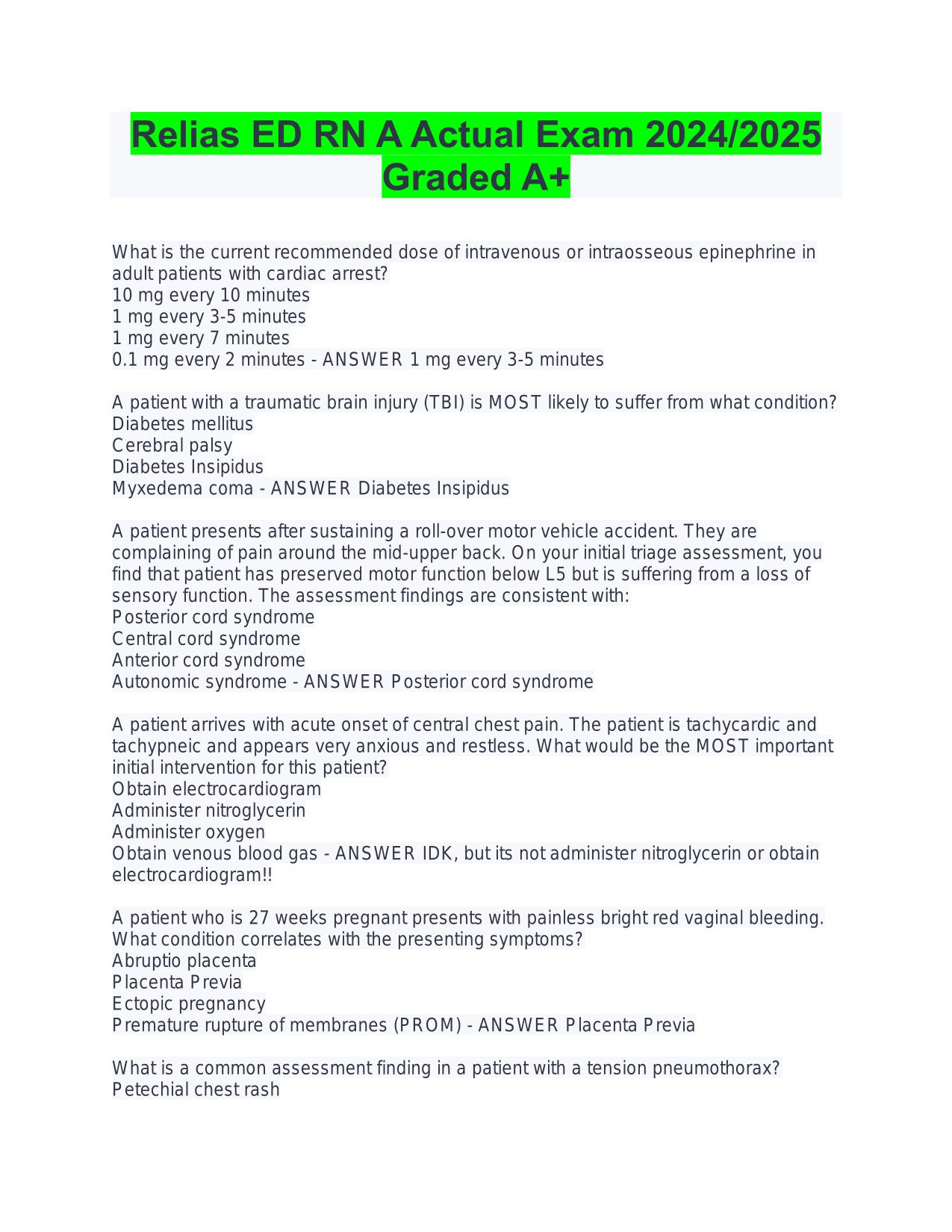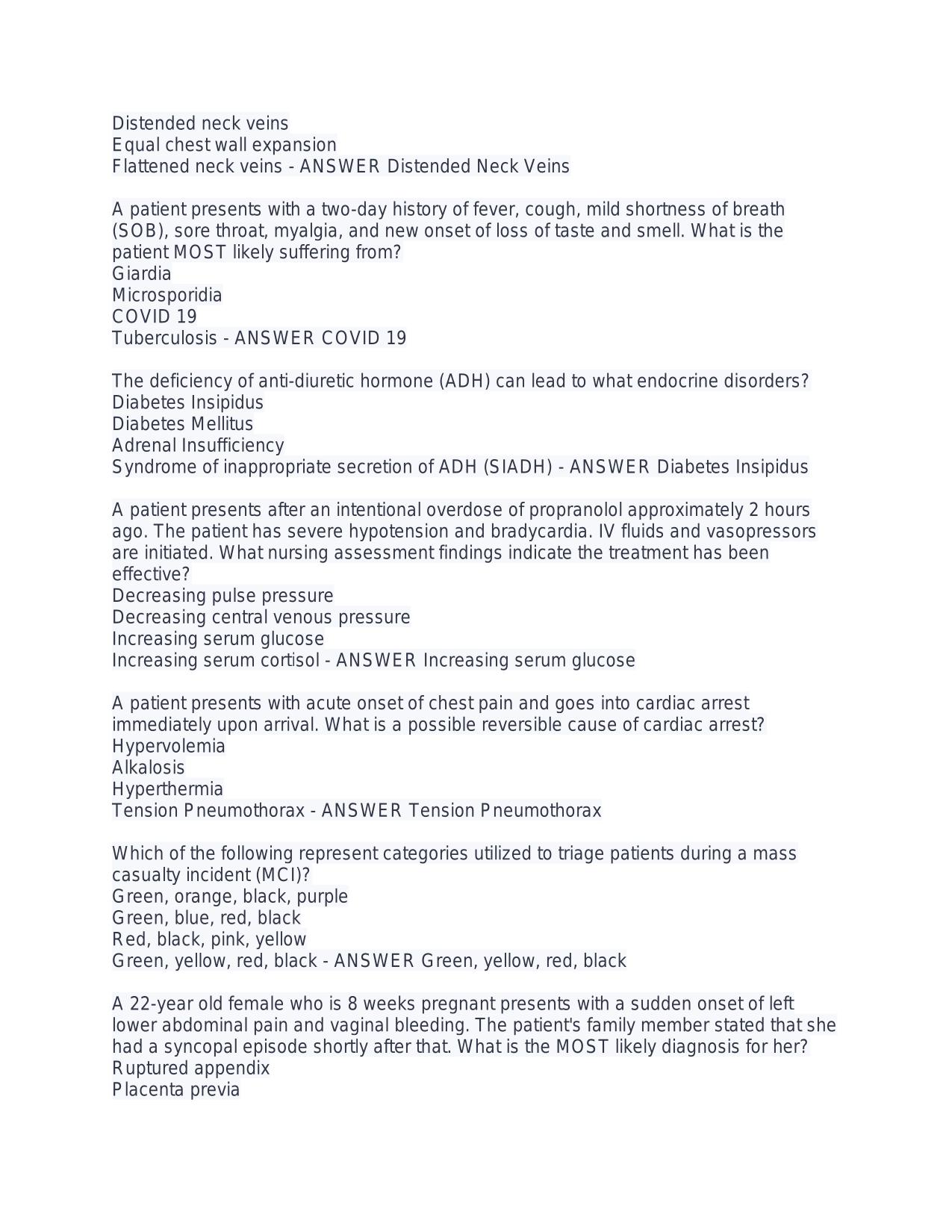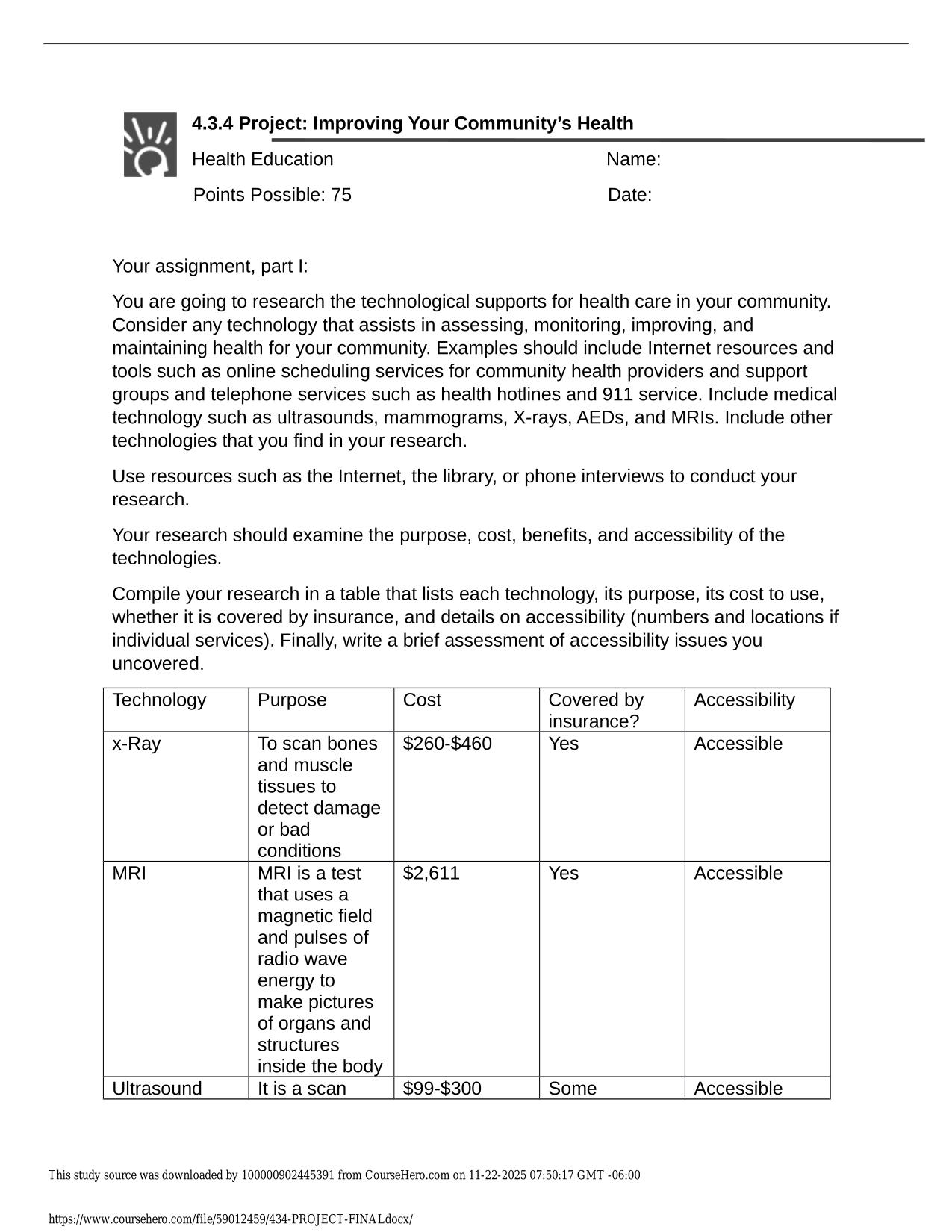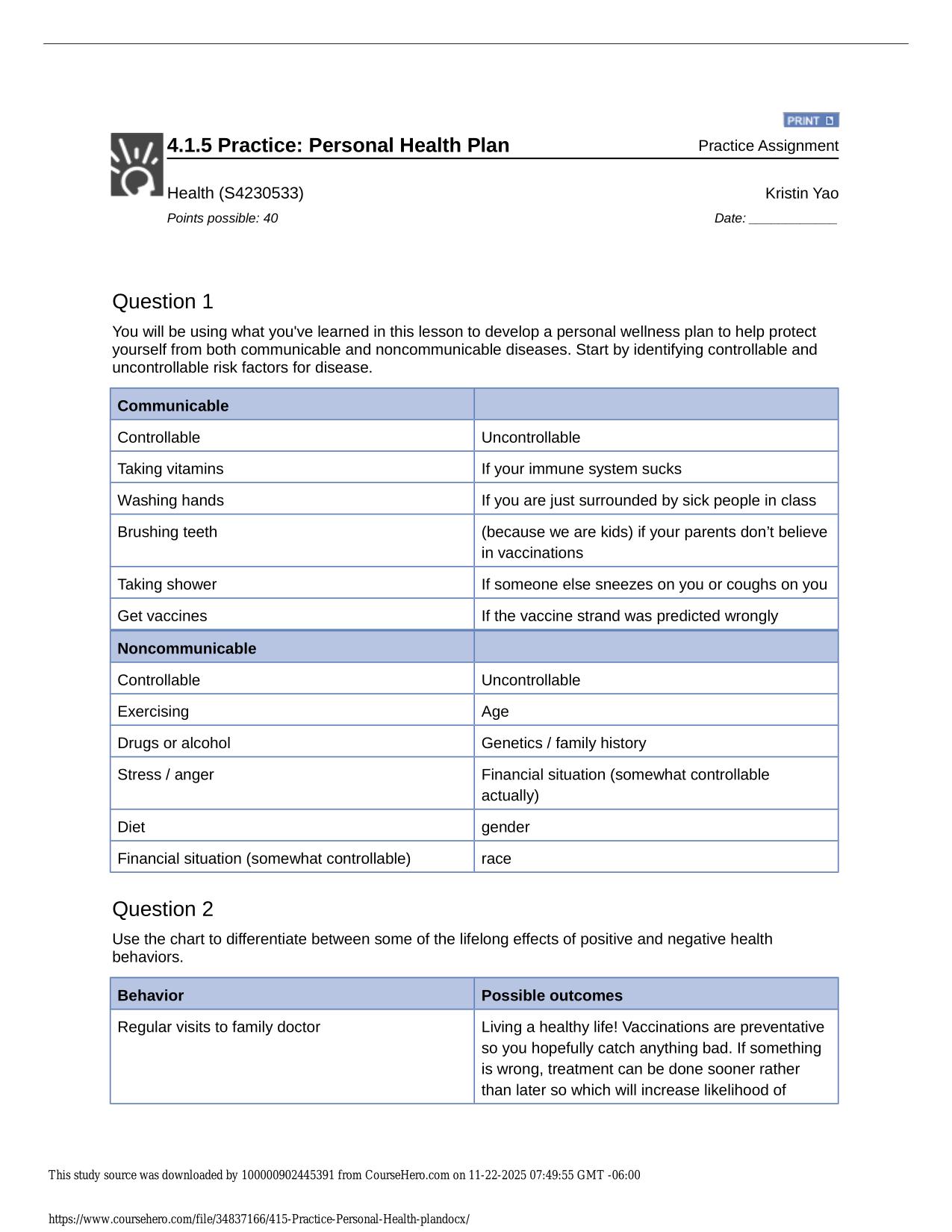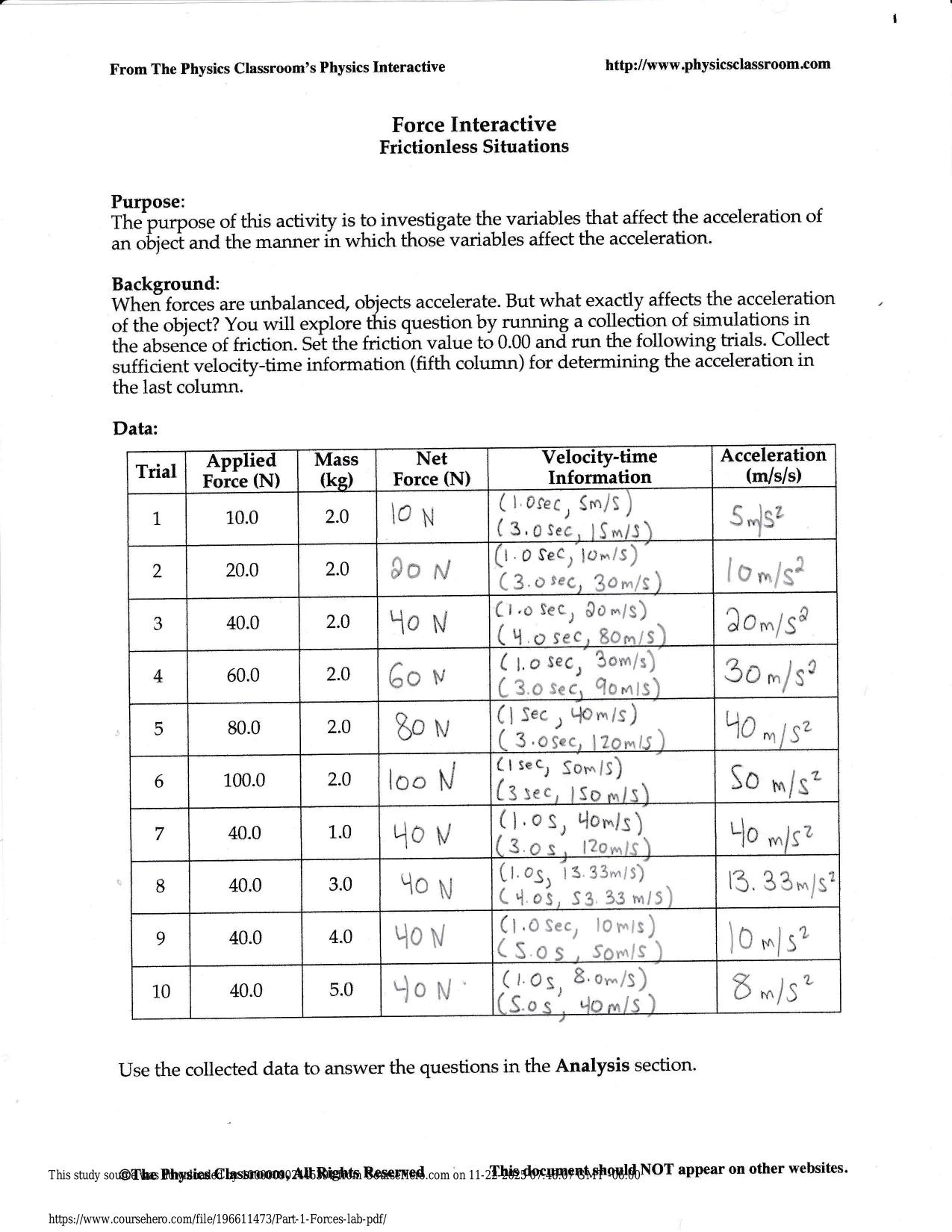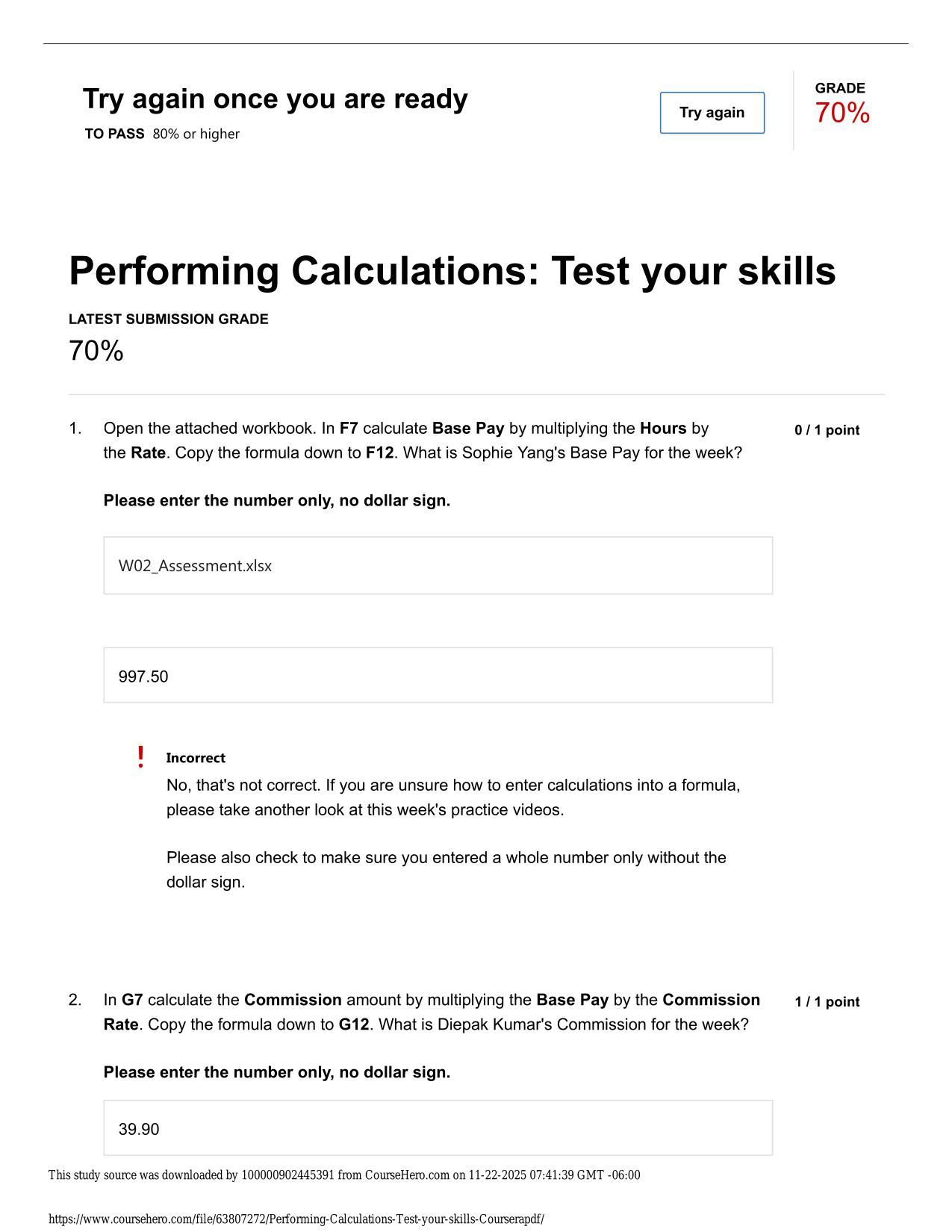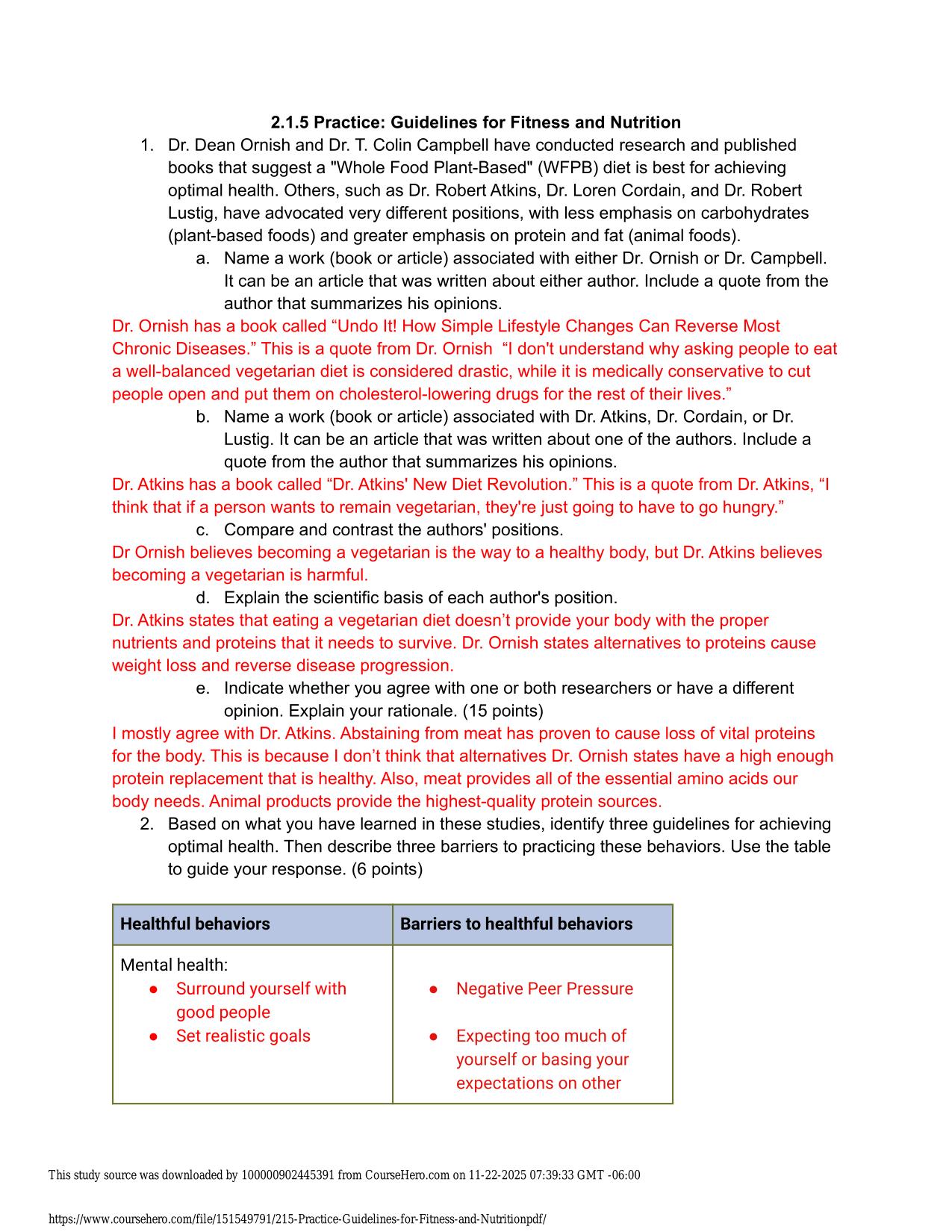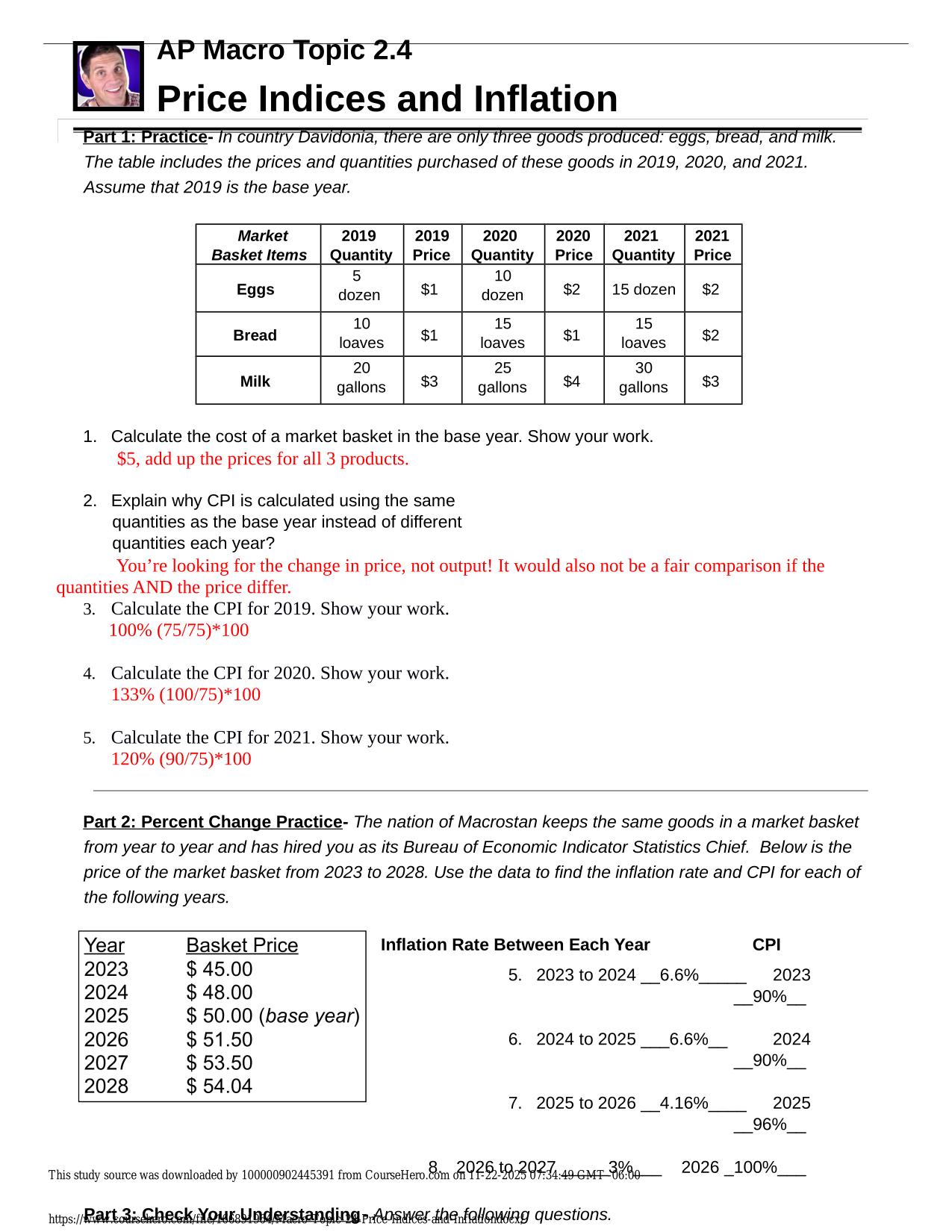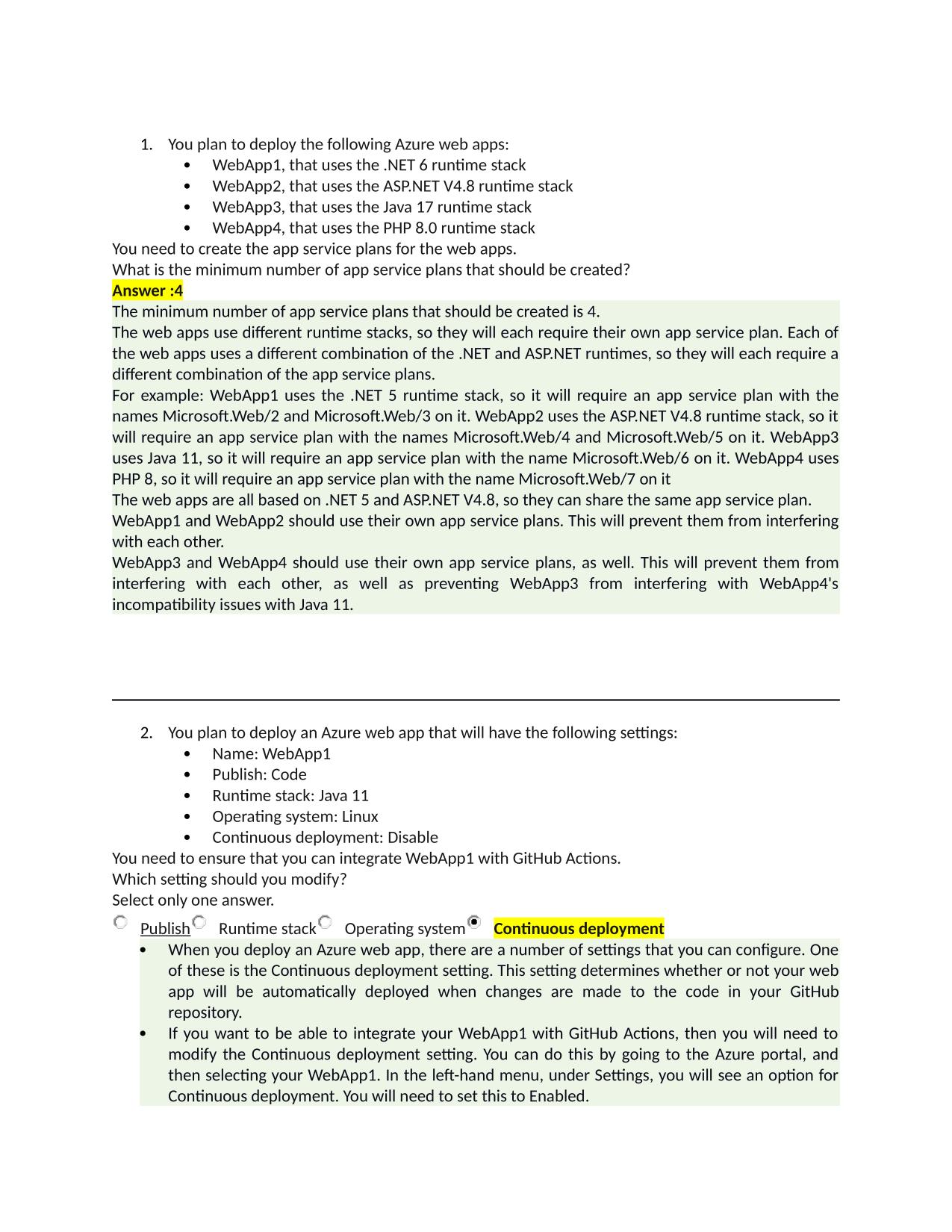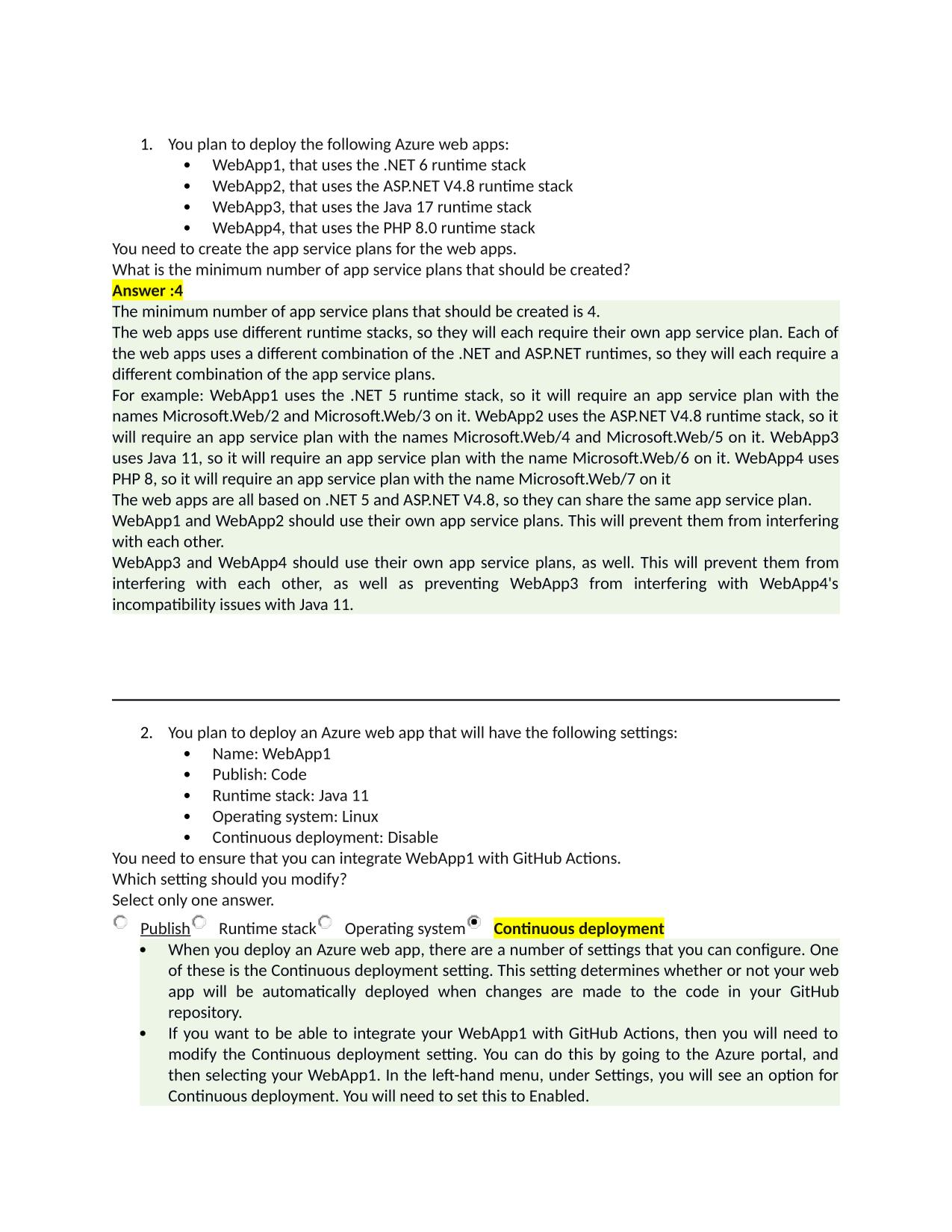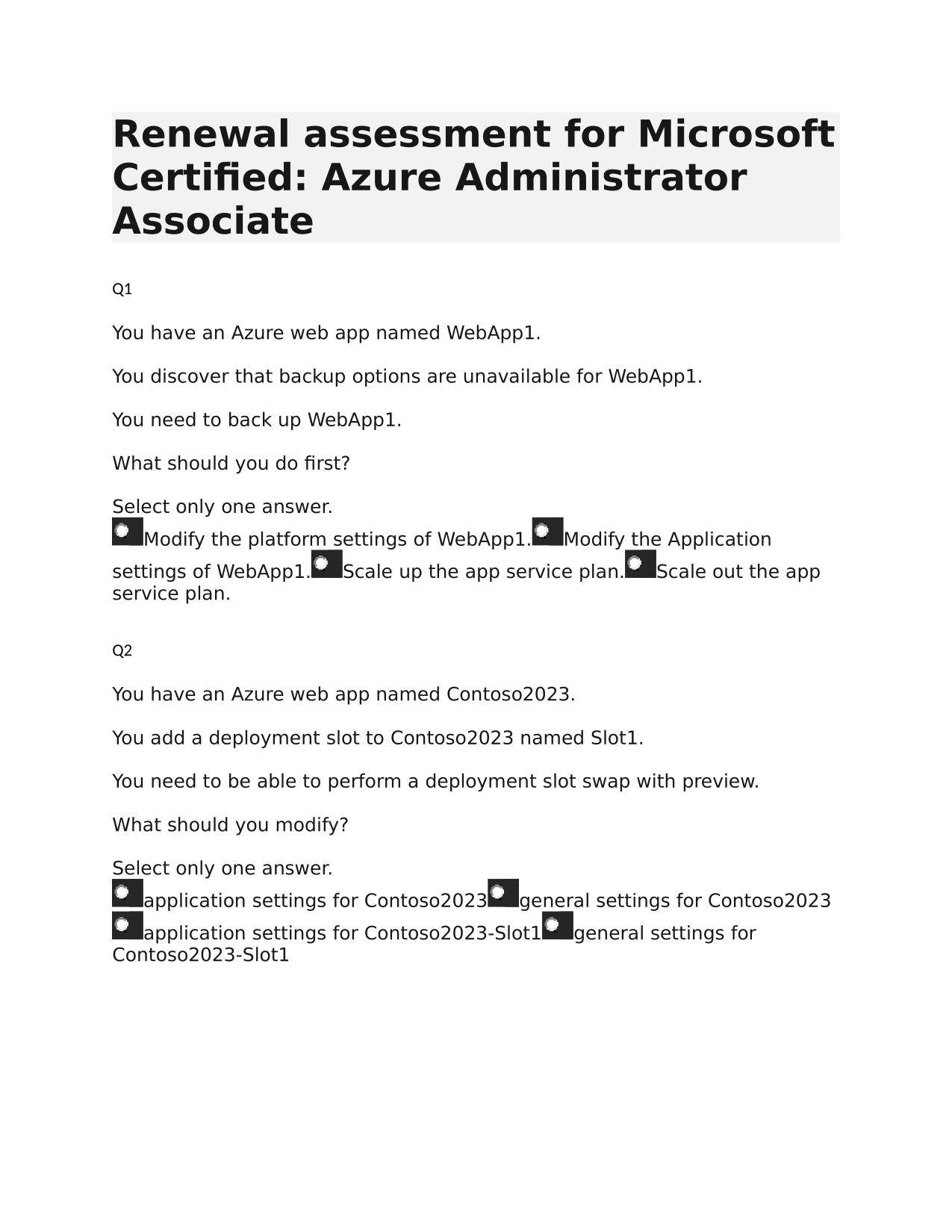Relias ED RN A Actual Exam 2025/2026 UPDATED Graded A+
Course:
Relias ED RN
Institution:
Relias ED RN
Relias ED RN A Actual Exam 2024/2025 Graded A+ What is the current recommended dose of intravenous or intraosseous epinephrine in adult patients with cardiac arrest? 10 mg every 10 minutes 1 mg every 3-5 minutes 1 mg every 7 minutes 0.1 mg every 2 mi...
After purchase, you get:
✅ Instant PDF Download
✅ Verified answer explanations
✅ Refund if not Satisfied
✅ Prepared for 2025/2026 test cycle
Overview
Learners can track consistent themes across questions, improving pattern recognition for the real exam. You'll start noticing recurring concepts and question structures that appear throughout the test. This pattern awareness helps you anticipate what's coming next and approach questions more confidently. Students often find this big-picture understanding makes them feel more in control during the exam.
Who Is This For?
Useful for individuals re-entering assessment practice after a long break, especially those aiming for Relias ED RN A Actual / Graded A+ certification. The material helps bridge knowledge gaps efficiently. Many returning students appreciate how it helps them get back up to speed quickly.
Related Keywords
Detailed Study Description
Frequently Asked Questions
Document Information
| Uploaded on: | November 1, 2025 |
| Last updated: | November 17, 2025 |
| Number of pages: | 12 |
| Written in: | 2025/2026 |
| Type: | Exam (elaborations) |
| Contains: | Questions & Answers |
| Tags: | Relias ED RN A Actual Exam 2024/2025 Graded A+ What is the current recommended dose of intravenous or intraosseous epinephrine in adult patients with cardiac arrest? 10 mg every 10 minutes 1 mg every 3-5 minutes 1 mg every 7 minutes 0.1 mg every 2 minutes - ANSWER 1 mg every 3-5 minutes A patient with a traumatic brain injury (TBI) is MOST likely to suffer from what condition? Diabetes mellitus Cerebral palsy Diabetes Insipidus Myxedema coma - ANSWER Diabetes Insipidus A patient presents after sustaining a roll-over motor vehicle accident. They are complaining of pain around the mid-upper back. On your initial triage assessment, you find that patient has preserved motor function below L5 but is suffering from a loss of sensory function. The assessment findings are consistent with: Posterior cord syndrome Central cord syndrome Anterior cord syndrome Autonomic syndrome - ANSWER Posterior cord syndrome A patient arrives with acute onset of central chest pain. The patient is tachycardic and tachypneic and appears very anxious and restless. What would be the MOST important initial intervention for this patient? Obtain electrocardiogram Administer nitroglycerin Administer oxygen Obtain venous blood gas - ANSWER IDK, but its not administer nitroglycerin or obtain electrocardiog |
Seller Information

AdelineJean
User Reviews (0)
Exam (Elaborations)
$9.50
Add to Cart
100% satisfaction guarantee
Refund Upon dissatisfaction
Immediately available after purchase
Available in Both online and PDF
$9.50
| 0 sold
Discover More resources
Inside The Document
Relias ED RN A Actual Exam 2024/2025 Graded A+ What is the current recommended dose of intravenous or intraosseous epinephrine in adult patients with cardiac arrest? 10 mg every 10 minutes 1 mg every 3-5 minutes 1 mg every 7 minutes 0.1 mg every 2 minutes - ANSWER 1 mg every 3-5 minutes A patient with a traumatic brain injury (TBI) is MOST likely to suffer from what condition? Diabetes mellitus Cerebral palsy Diabetes Insipidus Myxedema coma - ANSWER Diabetes Insipidus A patient presents after sustaining a roll-over motor vehicle accident. They are complaining of pain around the mid-upper back. On your initial triage assessment, you find that patient has preserved motor function below L5 but is suffering from a loss of sensory function. The assessment findings are consistent with: Posterior cord syndrome Central cord syndrome Anterior cord syndrome Autonomic syndrome - ANSWER Posterior cord syndrome A patient arrives with acute onset of central chest pain. The patient is tachycardic and tachypneic and appears very anxious and restless. What would be the MOST important initial intervention for this patient? Obtain electrocardiogram Administer nitroglycerin Administer oxygen Obtain venous blood gas - ANSWER IDK, but its not administer nitroglycerin or obtain electrocardiogram!! A patient who is 27 weeks pregnant presents with painless bright red vaginal bleeding. What condition correlates with the presenting symptoms? Abruptio placenta Placenta Previa Ectopic pregnancy Premature rupture of membranes (PROM) - ANSWER Placenta Previa What is a common assessment finding in a patient with a tension pneumothorax? Petechial chest rash Distended neck veins Equal chest wall expansion Flattened neck veins - ANSWER Distended Neck Veins A patient presents with a two-day history of fever, cough, mild shortness of breath (SOB), sore throat, myalgia, and new onset of loss of taste and smell. What is the patient MOST likely suffering from? Giardia Microsporidia COVID 19 Tuberculosis - ANSWER COVID 19 The deficiency of anti-diuretic hormone (ADH) can lead to what endocrine disorders? Diabetes Insipidus Diabetes Mellitus Adrenal Insufficiency Syndrome of inappropriate secretion of ADH (SIADH) - ANSWER Diabetes Insipidus A patient presents after an intentional overdose of propranolol approximately 2 hours ago. The patient has severe hypotension and bradycardia. IV fluids and vasopressors are initiated. What nursing assessment findings indicate the treatment has been effective? Decreasing pulse pressure Decreasing central venous pressure Increasing serum glucose Increasing serum cortisol - ANSWER Increasing serum glucose A patient presents with acute onset of chest pain and goes into cardiac arrest immediately upon arrival. What is a possible reversible cause of cardiac arrest? Hypervolemia Alkalosis Hyperthermia Tension Pneumothorax - ANSWER Tension Pneumothorax Which of the following represent categories utilized to triage patients during a mass casualty incident (MCI)? Green, orange, black, purple Green, blue, red, black Red, black, pink, yellow Green, yellow, red, black - ANSWER Green, yellow, red, black A 22-year old female who is 8 weeks pregnant presents with a sudden onset of left lower abdominal pain and vaginal bleeding. The patient's family member stated that she had a syncopal episode shortly after that. What is the MOST likely diagnosis for her? Ruptured appendix Placenta previa
CourseHero & Studypool Unlocks
Get Unlocked CourseHero and Studypool documents files instantly to your email, simply by pasting your link and clicking "Unlock Now". Learn more on how to unlock here.
